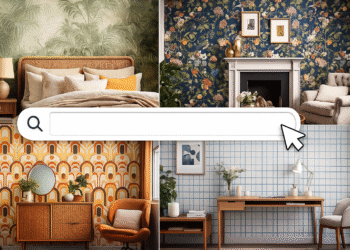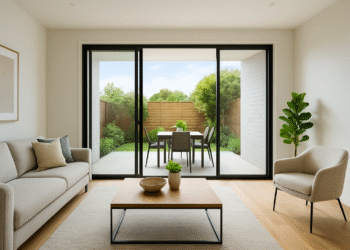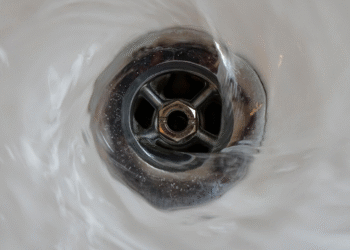
Got tired wooden floors that have seen better days?
Every homeowner wants beautiful flooring that makes their home stand out. After all, stunning floors lead to:
- Better property value
- More impressive living spaces
Here’s the problem:
Your once-gorgeous wooden floors now look dull, scratched, and completely worn out. Years of foot traffic, furniture moves, and general life have taken their toll.
Without proper restoration, those floors will only get worse.
The good news? Restoration techniques can completely transform those neglected surfaces into stunning showpieces that’ll have visitors asking “Who did your floors?”
What you’ll discover:
- Understanding When Restoration Makes Sense
- Essential Preparation Steps Before You Start
- Professional Sanding Techniques That Work
- Choosing The Right Finishing Options
- Cost-Effective DIY vs Professional Approaches
When Does Wooden Floor Restoration Make Sense?
Want to avoid wasting money on the wrong project?
Here’s the truth: Not every wooden floor should be restored.
If the floorboards are severely warped, rotting, or structurally damaged beyond repair… Replacement might be the smarter choice.
But here’s where restoration becomes a game-changer…
Surface scratches, minor dents, water stains, and general wear and tear? These are perfect candidates for restoration. Most hardwood floors require refinishing every 7-10 years.
A proper wooden floor restoration cost breakdown shows restoration typically costs around £240 for an average room. Compare that to thousands for a complete replacement.
That’s a massive saving.
Clear Signs Your Floors Need Restoration:
- Visible scratches and scuff marks across the surface
- Dull or completely faded finish
- Minor gaps are appearing between boards
- Water stains or obvious discoloration
- Squeaky or loose boards underfoot
See these issues? Restoration is the way to go.
Essential Preparation: Setting Yourself Up For Success
Most people make one critical mistake with wooden floor restoration…
They rush straight into sanding without proper preparation.
This is where projects go wrong. Skip the prep work and the results will show it.
Step 1: Complete Room Clearance
Everything needs to come out. Furniture, rugs, wall decorations – the lot.
Sanding creates dust that gets absolutely everywhere. Protect what can’t be moved with plastic sheeting.
Step 2: Thorough Floor Inspection
Look for loose nails, protruding screws, or boards that need securing. Fix these problems now or they’ll destroy expensive sandpaper later.
Step 3: Deep Clean Everything
Sweep thoroughly, then vacuum every single crack and crevice. Any debris left behind will cause major problems during the sanding process.
Pro tip: Document everything with photos before starting. This helps track progress and spot problem areas easily.
Professional Sanding: The Foundation of Great Results
Here’s where the magic happens…
Get sanding right and the floors will look incredible. Mess it up and… well, let’s just say expensive mistakes are hard to fix.
The secret to perfect sanding: It’s both an art and a science.
The Three-Grit System
Always use three different sandpaper grades:
- Coarse grit (40-60): Removes old finish and levels uneven spots
- Medium grit (80-100): Smooths the surface and removes coarse scratches
- Fine grit (120-150): Creates that silky final texture ready for finishing
Never skip grits. Each stage prepares the surface for the next.
Critical Sanding Rules
Always sand with the grain, never against it. Cross-grain scratches are nearly impossible to remove and will show through any finish.
Work systematically across the room. Overlap each pass by about a third. Keep the sander moving constantly – stopping in one spot creates dips that ruin the entire surface.
The floor restoration services market is valued at $12.5 billion globally. That shows just how many people choose restoration over replacement.
Want to know why? It works when done properly.
Choosing Your Finish: Protection Meets Beauty
Time to protect that perfectly sanded surface…
Here’s what most people don’t realize: The finish choice determines how long the restoration lasts.
Polyurethane Finishes
The most popular choice for good reason. Durable, water-resistant, and available in different sheen levels.
Oil-based polyurethane: Rich, warm tones but longer curing time. Water-based polyurethane: Faster drying with less odour
Penetrating Oil Finishes
These soak into the wood fibres for that natural, low-sheen appearance. Easier to spot-repair but needs more frequent maintenance.
Wax Finishes
Traditional appearance but requires regular reapplication. Not suitable for high-traffic areas.
For most homes: Satin polyurethane hits the sweet spot. Durable enough for everyday life without showing every footprint.
Apply in thin, even coats using a high-quality brush or applicator. Most finishes need 2-3 coats for optimal protection.
DIY vs Professional: Making The Right Choice
Here’s where things get interesting…
Should this be a DIY project or time to call the professionals?
The answer depends on several factors.
Professional restoration typically costs $5-8 per square foot. DIY projects cost as little as £2-3 per square foot for materials alone.
DIY Makes Sense If:
- Experience with power tools exists
- Professional-grade equipment can be rented
- Plenty of time is available (expect 3-5 days minimum)
- Dust and mess aren’t major concerns
Go Professional If:
- Floors have complex patterns or multiple wood types
- Lack of necessary tools and experience
- Quick completion is essential
- Guaranteed results are required
Remember this: Sanding mistakes are expensive to fix. Sometimes paying for professional expertise upfront saves money long-term.
Advanced Techniques For Problem Areas
Even perfect restoration projects hit challenges…
Here’s how to handle the tricky situations:
Deep Scratches
These need special attention during coarse sanding. Work slowly and expect to spend extra time getting them out completely.
Water Damage and Stains
Sometimes penetration goes deeper than surface level. Sanding down to bare wood might be necessary, or even individual board replacement.
Gap Filling
Small gaps between boards? Use wood filler that matches the floor colour. Larger gaps work better with thin wood strips.
Squeaky Floors
Usually caused by loose subflooring. Secure boards with screws from below or drive finish nails through the surface.
The global wood flooring market is projected to reach $67.1 billion by 2030. People still value the timeless appeal of real wood.
And for good reason.
Getting Professional Results Every Time
Want the secret to professional-quality results?
It’s all about attention to detail.
Time Investment
Don’t rush any step. Proper sanding takes time. Quality finishes need multiple coats. Shortcuts lead to disappointing results.
Quality Materials and Tools
They do make a difference. Cheap sandpaper tears easily. Low-quality finishes don’t protect properly.
Cleanliness Throughout
Vacuum between sanding grits. Clean thoroughly before applying the finish. Even tiny particles will ruin the final result.
Proper Lighting
Work in good lighting to spot imperfections immediately. Fix problems as they appear, not after they’re sealed under the finish.
Final Touches That Make All The Difference
The floors are finished and fully cured…
Now for the details that separate good work from great work.
Clean properly with a microfibre mop and appropriate floor cleaner. Add furniture pads to prevent scratches. Consider area rugs in high-traffic zones.
Here’s something most people completely forget:
Take photos when everything’s complete. The transformation will be amazing, and these photos help track the floor condition over time.
Maximizing Your Investment
Proper maintenance keeps restored floors looking incredible for years…
The maintenance routine:
- Sweep regularly to prevent scratches
- Clean spills immediately to prevent stains
- Recoat the surface every few years as needed
With the right techniques and patience, wooden floor restoration completely transforms any home. The results speak for themselves – beautiful, durable floors that add value and character to every space.
Bottom Line
Wooden floor restoration isn’t just about saving money…
It’s about preserving the natural beauty and character that only real wood provides.
With proper planning, the right techniques, and attention to detail, professional results are achievable and will last for decades.
The investment in restoration pays dividends in both aesthetics and property value.
Better still: There’s something deeply satisfying about bringing tired old floors back to their former glory.











